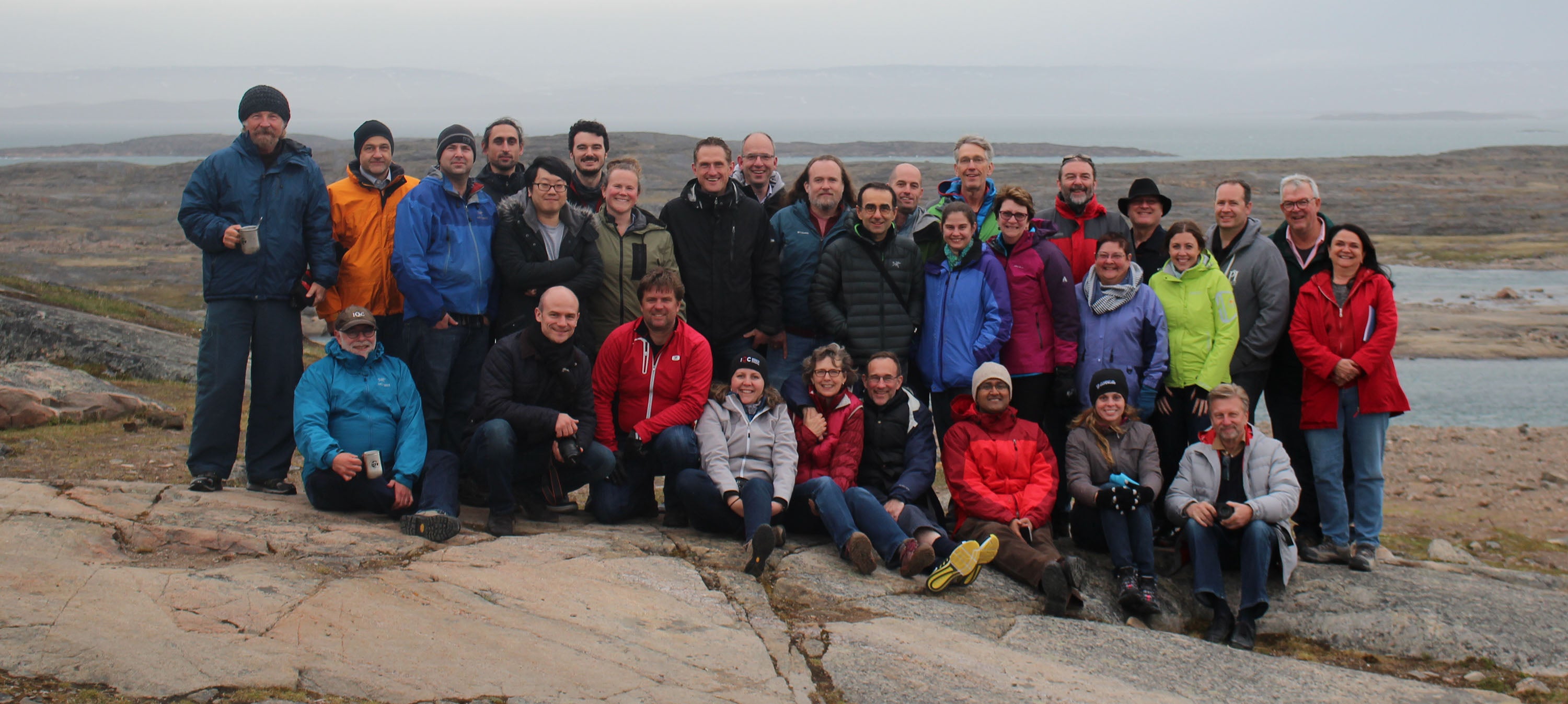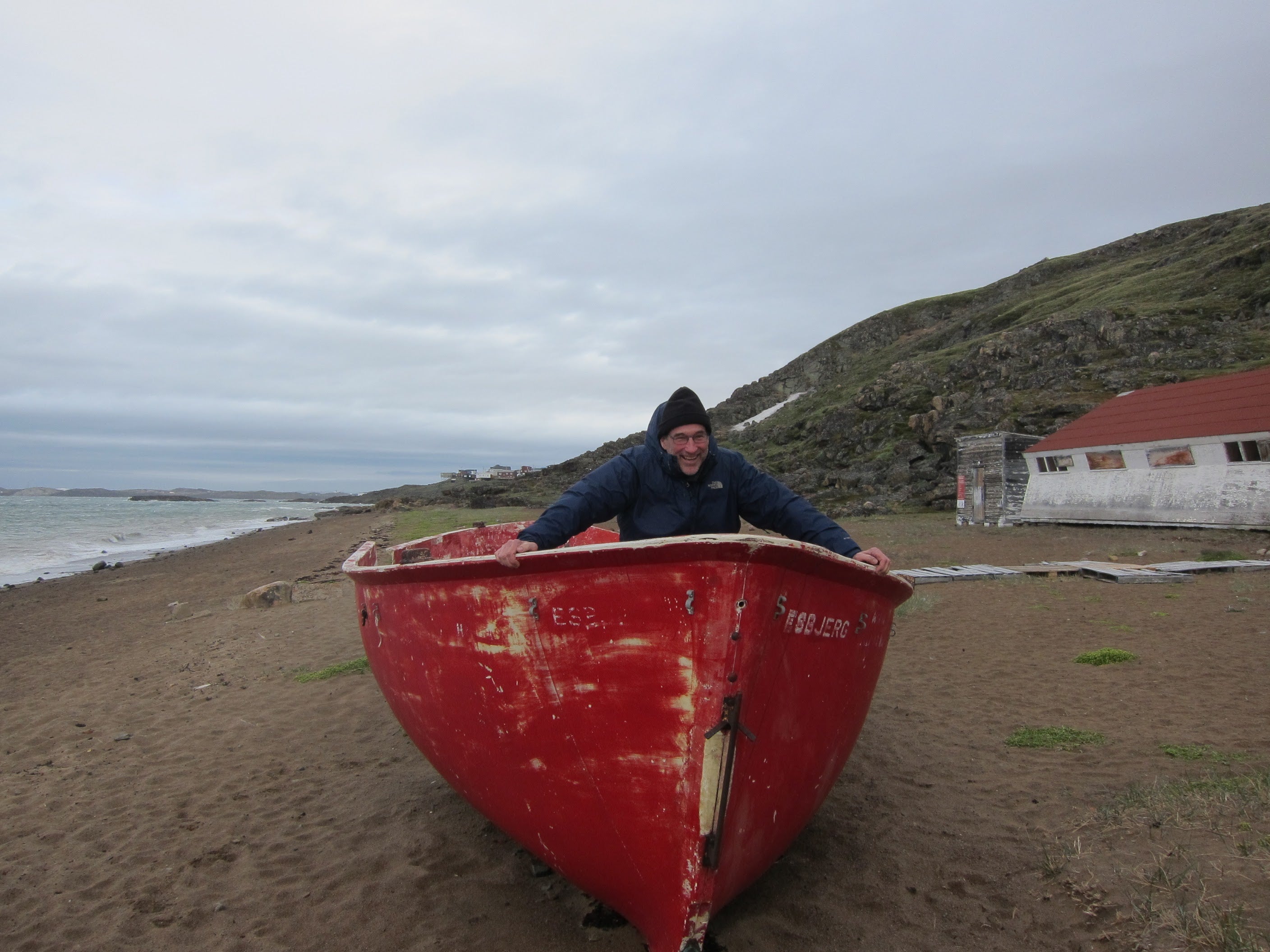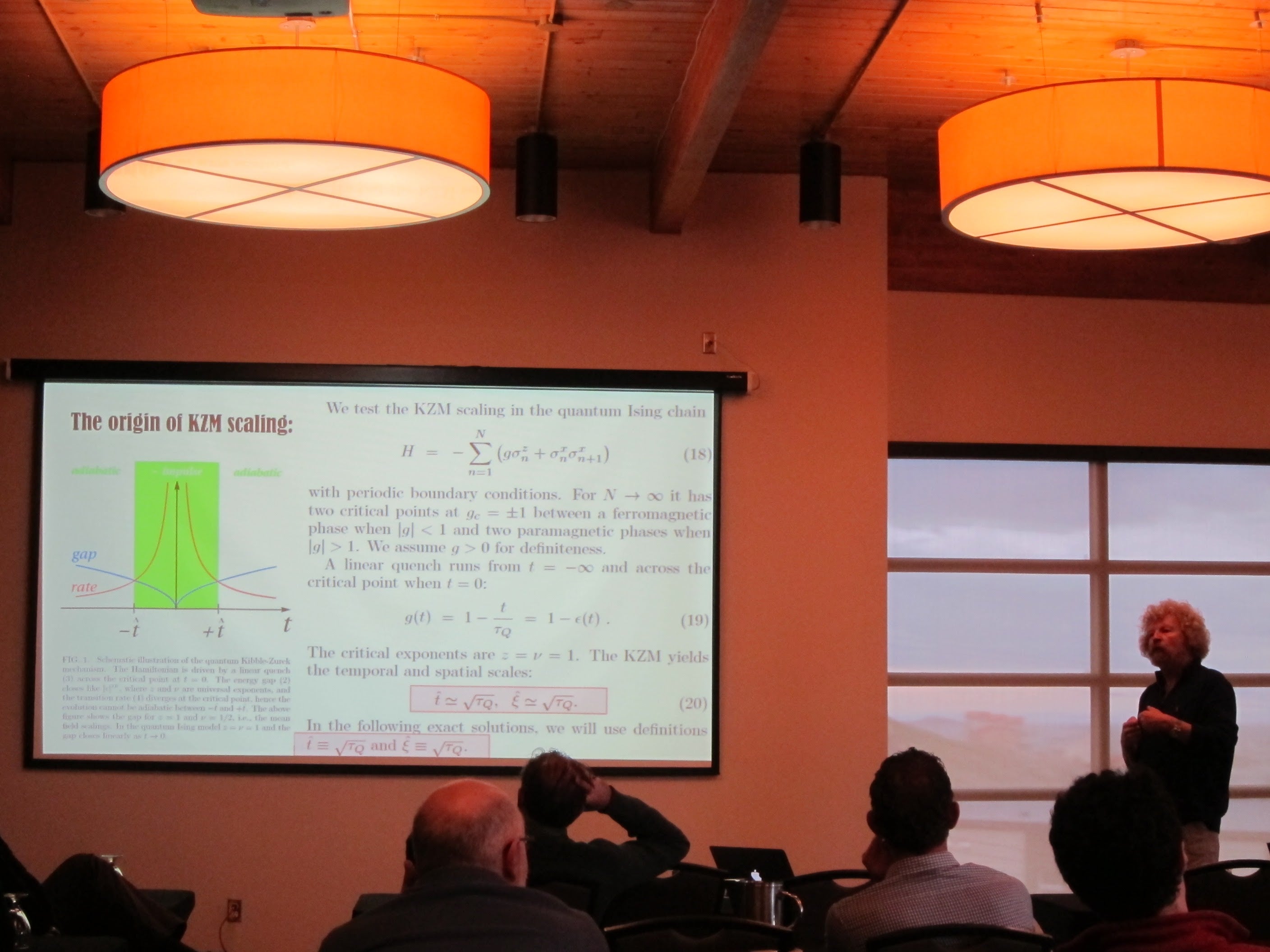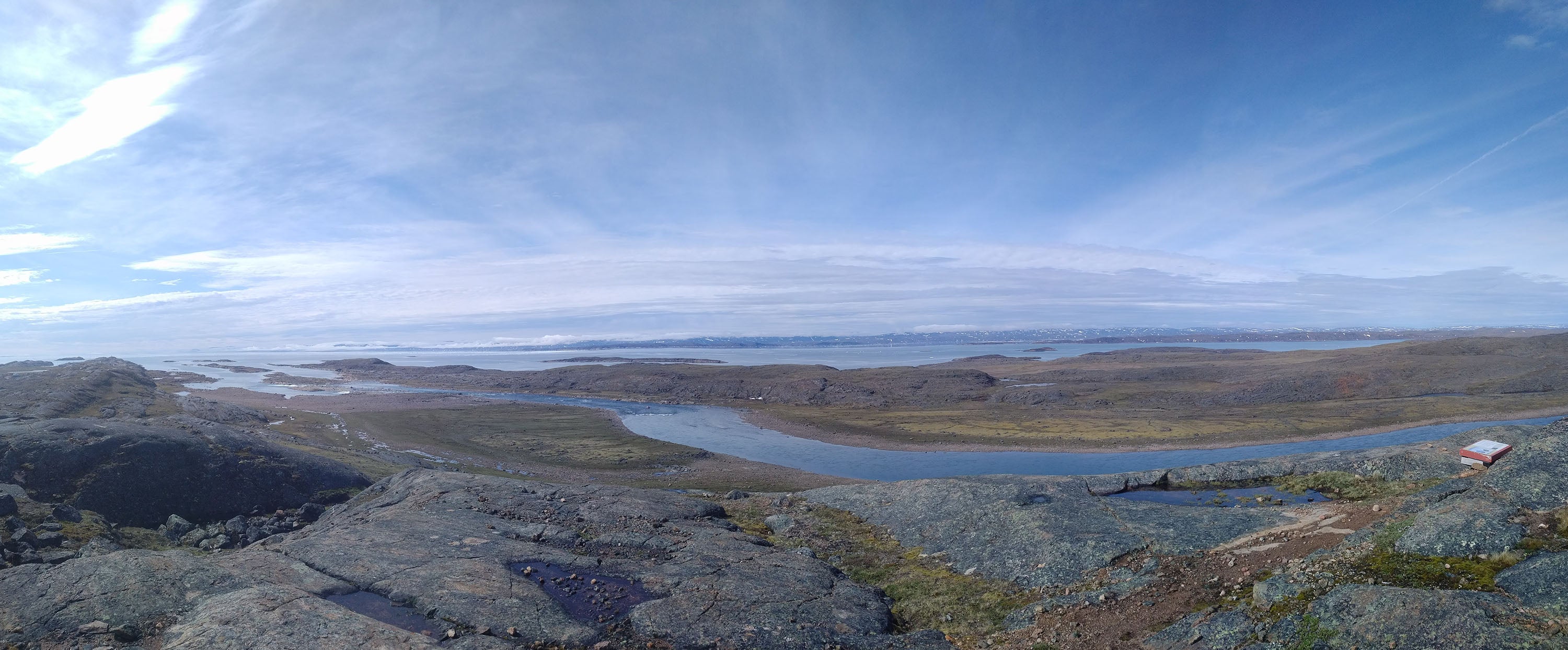
by Colin Hunter, Perimeter Institute for Theoretical Physics
Cutting-edge science met centuries-old traditions when researchers from the Institute for Quantum Computing trekked to the Canadian territory of Nunavut to share ideas.
On a mossy ridge overlooking a valley carved by an ancient glacier, the trekkers stopped to share caribou meat, narwhal, and Arctic char.
They watched melting icebergs drift in the Arctic Sea, and warmed their rosy faces in the sun, which never fully sets in summer and never fully rises in winter. After assessing the weather and the best route onward, they moved onto another pressing subject: microwave quantum optics with superconducting circuits.
Quantum science is a counter-intuitive field that can require researchers to step outside of their comfort zones, both mentally and physically. So, earlier this month, several-dozen of them ventured onto the thawing midsummer tundra of Iqaluit, the capital of Canada’s newest territory, Nunavut.
Like any typical scientific gathering, “Quantum in Iqaluit” included presentations and question periods; unlike most, it also included discussions about what to do in the (unlikely) event that a hungry polar bear should wander into town.
“This morning I had a wonderful conversation with a man who was born in an igloo and grew up hunting and trapping, and now I’m going to talk to you about quantum mechanics,” Charles Clark, a physicist at the National Institute of Standards and Technology, told his peers at the beginning of his presentation. “It’s not often something like this happens.”
And that, in large part, was the point. “Quantum in Iqaluit” was conceived with an eye to blending cutting-edge science with ancient traditions in a unique setting that sparked different ways of thinking.

The conference was timed to commemorate the 15th anniversary of the Institute for Quantum Computing (IQC) at the University of Waterloo, and to celebrate the legacy of the institute’s founding director, Raymond Laflamme, who stepped down from the post a week prior.
“An experience like this definitely changes the way people interact,” said Laflamme, who is also a founding Perimeter Institute Faculty member.
“This is the kind of thing we don’t always do incredibly well in physics — changing the environment in which people interact,” he said. “It can have a profound effect, a bonding experience, which changes the way we work together. It’s an experience that none of us will forget.”
As well as commemorating 15 years since the inception of the Institute for Quantum Computing, the conference also coincided, as luck would have it, with another relevant anniversary. Exactly 20 years prior to the start of the conference, physicist Alexei Kitaev published a paper that helped establish quantum computing as not just an intriguing theoretical concept, but an actual real-world possibility. Kitaev’s paper provided a scheme for quantum fault-tolerance, allowing quantum processors to deal with the inevitable errors inherent to harnessing subatomic phenomena for computation.
“[Kitaev’s paper] made quantum computing something that was not just a dream, but something that might actually be possible,” said David Poulin, former IQC PhD student and a Perimeter Affiliate researcher.

Among the researchers who attended “Quantum in Iqaluit” were peers of Kitaev’s and longtime collaborators of Laflamme’s, including Wojciech Zurek, Jeff Kimble, Harry Buhrman, Juan Pablo Paz, and others who have advanced quantum information science over the past several decades.
None of the conference participants, save for Laflamme, had ever been to Nunavut before, which is precisely what made the locale the right choice. “We came here because I am passionate about the north, and how people here have used ingenuity to solve difficult problems for generations,” said Laflamme. “They have persevered here for so long. I think we have a lot to learn from them.”
The conference also offered a chance for residents of Iqaluit to learn about the science, thanks to IQC’s travelling roadshow, QUANTUM: The Exhibition. Visitors to the exhibit learned about particle polarization by making an image of Schrödinger’s famous cat oscillate between “alive” and “dead,” and fired photons in an interactive version of the quantum double-slit experiment.

The conference was launched with the lighting of a traditional Inuit oil lantern called a qudlik, by Iqaluit elder Miala Panipak. “This is a very important thing to us, the lighting of the qudlik,” Panipak, speaking in Inuktitut, said through translator Malaya Qaunirq Chapman. “We now use it to symbolically begin important events. We are so glad all of you are here to share it with us.”
Following the lighting of the qudlik, local throat singers Alexia Galloway Alainga and Kristin Qaunaq performed songs that represent traditional interpretations of natural phenomena like the wind and the flow of a river.
For the researchers, whose work seeks to understand and control natural phenomena at the subatomic level, the exposure to Inuit interpretations of nature provided new perspectives on what they do as scientists.
“When you bring together theorists and experimentalists in a very unique environment, with unique experiences, you hope that you will contribute to a tradition that is bigger than yourself,” said Raffi Budakian, an IQC faculty member and Associate Faculty member at Perimeter.
On a group scavenger hunt through Sylvia Grinnell Territorial Park — a rugged, 45-square-kilometre expanse carved out by glaciation 7,000 years ago — acting IQC Director Kevin Resch chatted with colleagues about both quantum causality and the beauty of the rolling, snow-capped mountains on the horizon.
“Most of us have never had a chance to come to an amazing place like this before,” Resch said. “I don’t think I’ve ever been to a place that has inspired me to think so much about how things work — how people live, how they survive, how they thrive. It builds a sense of camaraderie to share unique experiences in a unique place. People will be talking about this meeting for a long time — not just for the scientific ideas we discussed, but for the experiences we shared.”
